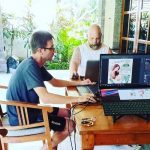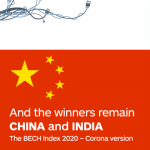Epic – A Genuine Shoestring Approach
Epic, the global market leader in Electronic Health Record solutions for the healthcare industry, never invested in marketing or applied social selling. They focused on customers success, attended industry events and waited for the phone to ring.
Have you ever considered that healthcare is primarily information processing and analytics?
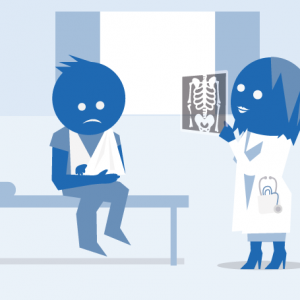
Clinics and hospitals are full of material with buildings, people in uniforms, furniture, machinery, instruments, medicine, syringes, bottles, tubes, blood banks, vehicles and thousands of other physical artefacts. However, all those assets are worth little if you cannot quickly produce the correct diagnosis and allocate the resources and capacity for swift treatment. And doing so requires seamless cooperation between the many disciplines involved. Capturing, processing, sharing, storing, finding and analysing information is a core activity of any healthcare system.
Healthcare is expensive. Very expensive. Under normal circumstances, it costs anywhere between ten per cent (Europe) and up to 17 per cent (USA) of GDP. During the current Corona-crisis, the bill gets even bigger. And most of the cost walks on two legs. People. So, although we all admire the developments in medicine, medical equipment and surgery technologies, we often tend to forget that what makes all this effective and affordable is the advances in skills, organisation and information technology.
Any complex organisation – and not many get more complicated than healthcare – comes with substantial overheads. Wherever many highly specialised people need to cooperate to achieve a single objective, the most significant challenges are always collaboration and information processing. Making correct information flow smoothly and timely is the key to organisational performance and the quality of treatment.
EHR (Electronic Health Record) has become the term for information processing in healthcare, but it is much more than just record-keeping. It’s a journey of workflow and data management. The data from the patients, lab tests, x-rays, scanning, prescriptions, from the nurses’ and doctors’ observations, from the diagnosis and treatments, etc., all come together in the health record. However, to make this possible, every function and discipline in the healthcare organisation must use compatible data formats and have systems in place that can talk to each other within the individual organisation that can best be accommodated by using the same software.

Theoretically, each discipline could use their own system, and integration and compatible data formats ensure that information could flow between them. However, ensuring that so many individual sub-systems and their combinations were always up-to-date, and functioning, would be an astronomical task. Where the cloud-based best-of-breed solutions are gaining ground in other industries, the situation in the healthcare market is different.
The emergence of an international industry
For the reasons mentioned above, clinics and hospitals across the globe have preferred to implement integrated EHR systems, where a single vendor is responsible for most of the functionality across many disciplines.
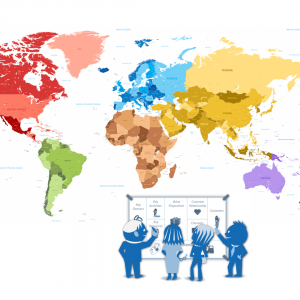
Where the improvement in clinical treatment is the subject of international cooperation among healthcare professionals and, therefore, common standards across the globe, the administrative side (organisation, capacity planning, political prioritisation and who pays for what) differs substantially from country to country. This explains why most countries have their own industry of healthcare informatics providers. Integrated IT in healthcare started with the administrative side (PAS: Patient Administrative Systems) and only later did the systems expand into the clinical workflows.
Developing an integrated EHR system is not unlike putting a man on the moon. Understanding the challenge is simple. Making a working system is anything but simple. It is a gigantic undertaking that can only be done over a long period and in close cooperation with the users. Emerging as the market leaders in EHR systems, we find US-based companies primarily, and in the category serving larger organisations, Epic takes pole position. No other company in the world has more patient information running through their software than Epic.
A shoestring approach
With over 10,000 employees, annual revenue of over $3B, and over 450 customers in 14 countries (as of March 2020) you would not consider Epic a company using a shoestring approach to internationalisation. However, it always did, and it still does.

development at Epic.
“We have never considered the world organised into country-markets that we could proactively decide to approach,” says Mercedes McCoy, VP of international business development at Epic. “For us, the market is where customers are active, share our vision for an integrated system, have requirements that match our products and prefer our implementation approach. We are one hundred per cent customer-driven and not market-driven.”
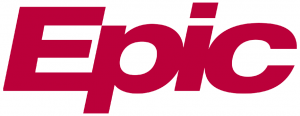
Epic, which derives about ten per cent of its total revenue from international activities, was founded in 1979. The company signed its first international customer in Canada in 1994. The next came from The Netherlands in 2007. An organization in the UAE was added in 2010, Singapore in 2012, the UK and Denmark in 2013, Australia and Saudi Arabia in 2014, Finland and Lebanon in 2016, Belgium and Switzerland in 2017 and Norway in 2018.
“Today, the global market for EHR systems for larger organisations is very transparent,” says Mercedes McCoy. “Clinicians and IT-professionals visit each other and attend the same international conventions, conferences, and exhibitions. From industry analysts such as KLAS Research, they have access to vendor-agnostic information and comparisons. For nine years in a row, Epic has earned the top score for Overall Best Software Suite in the annual Best in KLAS Software & Services report. Most customers in our segment know very well who we are and what we stand for.”
At the time of writing Epic does business in 14 countries, and their solution is available in eight languages.
How Epic crossed the chasm
Although Epic started its first international project in Canada in 1994, it wasn’t until the beginning of this century that the needle really started moving. And it started moving in the domestic market first.
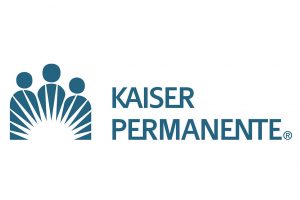
In 2003, Kaiser Permanente, the largest managed care organisation in the United States, chose Epic as the platform for its new company-wide EHR-system. Over the next seven years, Kaiser Permanente would invest a total of USD $4B in development and implementation, which funded the training of their staff, hardware purchases, the software from Epic, and more. Kaiser Permanente was an innovator and early adopter, and with that project under its belt, Epic crossed the chasm in one single jump. Kaiser Permanente became a global showcase, and healthcare professionals from all over the world made pilgrimages to Kaiser’s locations in California and elsewhere across the United States to see and hear what was going on.
When the Dutch health authorities started looking for EHR-software, Epic was on the list of potential candidates. Epic teamed up with the healthcare division of Philips, and together they won their first major EHR project outside the US, Spaarne Gasthuis, in 2007.
The cooperation with Philips Healthcare didn’t continue. Epic realised that it was too complicated to have another company facing the client, and since then, it has been the primary contractor in all of their new customer projects. In the following years it added more customers in the Netherlands and in 2010 Cleveland Clinic, Abu Dhabi in the United Arab Emirates, was added to the list. The big breakthrough came in 2013 when significant projects were won in Denmark and the UK, confirming Epic’s ability to deliver consistently and successfully outside the USA.
Making sales without marketing

Epic’s strategy for international expansion has been and remains reactive. They don’t do paid marketing or advertising and don’t cold-call prospective clients. They only respond when potential customers invite them to participate in an RFP (request for proposal) and then only when the requirement specifications are close to what they can offer and that they agree on the implementation approach.
In the English-speaking parts of the world, which includes the Nordics, Benelux, and Switzerland, the language used for communicating during the RFP and implementation process is the same. When that is not possible, Epic hires or engages staff that master the local language. Translation of the software user interface first happens when Epic has been awarded the contract.
“With over 450 implementations under our belt, we have refined an implementation approach that we know works,“ Mercedes McCoy stresses. “We work closely with our customers to share best practices and lessons learned from these past implementations to help new installs be successful. Implementing a new EHR system is a significant change. By using our project management method, we can bring the system live on-time and on-budget.”
The implementation approach requires that the customer establish a project team, which includes experienced clinicians, who are then thoroughly trained and then certified in Epic’s software. Initially, the training takes place in Epic’s headquarters in Verona, Wisconsin, USA. By attending training at Epic, those working with the system have an opportunity for hands-on learning on a campus designed for creativity and productivity. As expertise is developed locally, the training and certification can also be localised.
Knowing how the software works and the options it offers, the solution architecture, in terms of organisation, workflows and integrations, can now be defined. The customer has to set up her own user support facility, which preferably should be staffed with the people that did the implementation.
“When we take on a project abroad, we also open an office in that country and relocate some of our most experienced people or use an office in a nearby country to support the organisation,” Mercedes McCoy explains. “The average implementation takes around two years – though this can vary depending on the size and scope of the project – and is very much a partnership between the client and us. The client must become intimately familiar with the software as we agree on the configuration and integrations. When we have completed the implementation, the customer should be capable of maintaining the system and provide the first line of support.”
A matter of life and death
When implementing Epic, organizations seek to improve the quality of patient care and the productivity of health care resources. It typically replaces several disparate systems based on older technology.
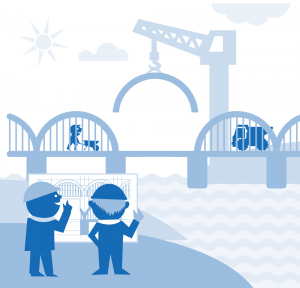
Upgrading the core application infrastructure in large organisations is a massive change management undertaking. The recent implementation of Epic in Denmark has 40,000 users, of which 12,000 are expected to be concurrent. New working procedures, new functionality, new user interfaces and new integrations all represent a challenging learning curve for the staff. As the end result affects people’s health and recovery, healthcare authorities are known for playing it safe and for preferring solutions that have proven themselves elsewhere.
In the diffusion of innovation perspective, Epic has become the safe choice for healthcare organisations around the world. Customers recognise Epic’s track record and experience. Because the non-negotiable priority in changing the workflow and data management backbone in healthcare institutions is based on the first principle of the Hippocratic Oath: Primum non nocere (first do no harm), risk mitigation is a much more serious issue than in other industries.
“We know exactly what is at stake,” says Mercedes McCoy, “which is why we consider every invitation to bid very carefully before we say yes or no. It is first and foremost a question about the prospect of a successful implementation. When we are convinced that the projects can be completed successfully, then we commit the resources required to make it happen.”
Replacing the workflow and data management platform in a healthcare institution is a significant disruption. It’s like renovating an aeroplane while it’s airborne. While staff get familiar with the new system, production, quality and safety must not be affected.
Disrupting the industry

The increased global demand for proven EHR solutions is changing the industry. The combination of requirements for tested software functionality and for ensuring that the project can be delivered on time and budget puts pressure on the local and smaller vendors that haven’t had a project like Kaiser Permanente to bring their products up to date.
As Epic wins more and more international projects, they also become the preferred supplier for new ones. However, according to insiders I have talked to, Epic is not only providing a complete solution, but they also have the most professional organisation to deal with the all the meetings, demos and workshops that take place during the selection and procurement process. Having the best product and the most professional people is an excellent marketing recipe in a highly transparent market.
Epic is a good example of how to go global on a shoestring in a market that was previously dominated by smaller and local vendors. It has happened organically and without the presence of a vast marketing and outbound sales effort.
This post is an excerpt from my upcoming book Going Global on a Shoestring.







